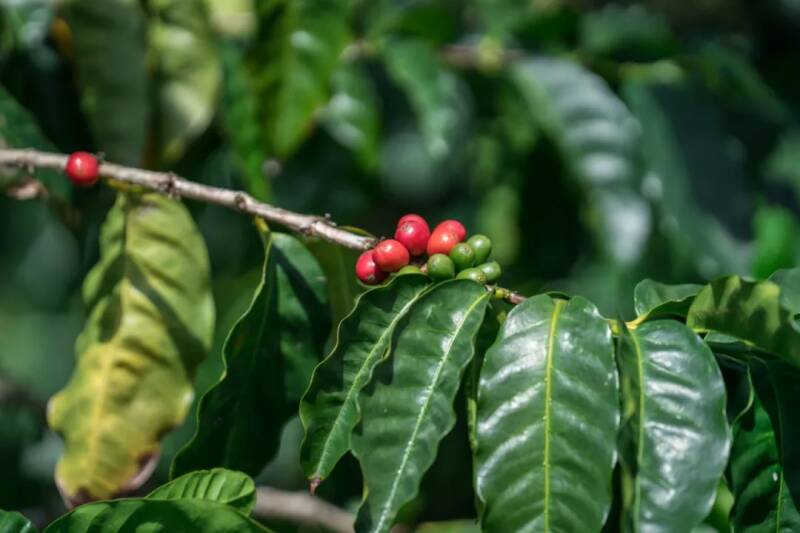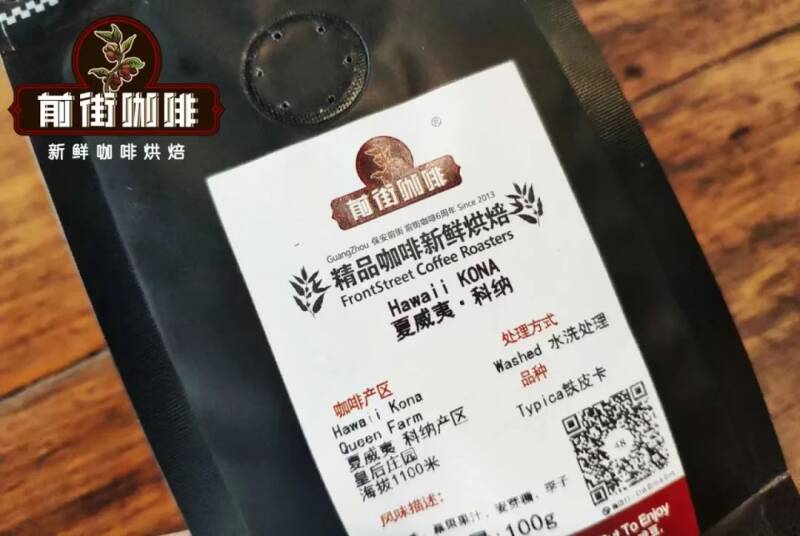What kind of coffee is Coffee Queen? What kind of beans does Kona coffee belong to? Arabica, the queen of global coffee
Blue Mountain Coffee has been called "Coffee Emperor" because of its "three highs" (high quality, high price and high rarity) in the last century. But did you know that there used to be a coffee because it was infinitely close to Blue Mountain Coffee in all respects, so it got the same title as Blue Mountain Emperor-"Coffee Queen". And it is "Kona Coffee" (Kona) from the Hawaiian region of the United States.
Although the vast majority of European and American countries are big consumers of coffee, they do not produce coffee. Because coffee is very demanding on the climatic conditions of the growing environment, and most of the countries in Europe and the United States cannot meet it, so their coffee will be more dependent on imports. Hawaii in the United States is one of the few that can meet the conditions for growing coffee, so it has become the only coffee producing area in developed countries. Hawaii is an archipelago, because of the island climate, so even if the altitude is not high, it is also very suitable for coffee cultivation. In Hawaii, except for two special islands, Niihau and Kahoolawe, coffee is grown in the other six islands.
Oahu is the first Hawaiian island to come into contact with coffee. In 1817, before Hawaii was annexed by the United States, Spanish consultant Francisco introduced coffee to the Hawaiian island of Oahu for experimental cultivation. In the following period of time, coffee has been introduced from outside to grow. But as we can see from this map of the producing area, most of the islands, including Oahu, do not have a corresponding coffee planting color logo. There are two reasons. The first is that the growing area of coffee is very small. The area of the Hawaiian island is small, and if most of the national protected areas are removed, there is naturally not much land that can be used for farming. Therefore, coffee in many islands is basically planted in a small area and does not form a scale.
The second is because coffee in Hawaii suffered from a pest that caused almost all coffee trees in Hawaii to fall except for the Kona producing area. As a result, there is not much coffee produced in Hawaii today. With the exception of the Kona producing area, the coffee produced by other islands is almost negligible. As of today, the number of plantations in Kona is as high as 600. As a result, coffee from Kona has become the representative of Hawaii, and people naturally think of Kona when they talk about Hawaiian coffee. The coffee grown in Kona is mainly iron pickup, which was introduced from Guatemala in 1874 by a sugar farmer who originally grew sugar cane. Just as the iron pickup was born to grow on the island, it didn't take long for the iron pickup to adapt to the local climate and thrive.

Under the nourishment of the island climate, these coffee rooted on the island burst out with a different delicacy. The sour taste is soft and mellow. This attracted the favor of many local farmers and began to plant iron trucks one after another. With the growing number of people, in order to distinguish them from other tin cards, the varieties of tin cards planted in Kona have been given a new name-"Kona Iron pickup" (Kona Typica). But it's just a local name. in fact, it's still a tin pickup. Like most coffee producing areas, the coffee industry in Hawaii has its ups and downs. From the beginning to the end, with the depression of the US economy, Hawaii's coffee industry has hit rock bottom. Many landowners are unable to maintain the operation of the farm and can only resell all the farms. The main takers of these farms are the Japanese who emigrated to Hawaii, but due to limited funds, each family can only buy a small piece of land on the farm, only about 5 hectares. That's why there are more than 600 plantations in Kona, Hawaii, because they are not traditional large farms, but family farms.
After the end of World War II, the coffee market in Japan became more and more prosperous. Even if they have monopolized the market for Blue Mountain Coffee, the Japanese are not satisfied. It wasn't long before they targeted Hawaiian coffee. Just like Blue Mountain, Kona is a variety of iron pickup, and the planting environment also has an island climate, so the Japanese began another "monopoly" program. But Kona's iron pickup did not become another coffee emperor because the tin cards planted by Kona were fuller, more transparent and more beautiful. To put it simply, it is more beautiful, so it is given the name of "queen" equivalent to the emperor.

But I believe everyone has found that even now that Blue Mountain has been freed from monopoly, Kona is still very rare in today's market. This is not because Kona is monopolized by the Japanese, but because, as mentioned earlier, production is scarce. The planting area limits the quantity, so that the quantity that can be exported to the country is not large. And because of the superposition of costs, the price of Kona coffee has gone up. Even if it has a good performance, people will be more likely to choose other more cost-effective coffee, so Kona is still very rare today.
-END-
Important Notice :
前街咖啡 FrontStreet Coffee has moved to new addredd:
FrontStreet Coffee Address: 315,Donghua East Road,GuangZhou
Tel:020 38364473
- Prev

How to brew coffee correctly? The difference between one-step flow and three-step flow of hand-brewed coffee What impact does the way hand-brewed coffee brew brew have on the flavor of coffee?
Qianjie Store recently met some "bold and meticulous" friends who asked when ordering: "I want to order two cups of coffee with the same beans, but can I brew it in a different way because I want to experience the different flavors of this bean! "The reason why these friends have such thoughts is because
- Next

Ruixing Coffee and China Tennis Co., Ltd. are jointly branded, and surrounding products have been caught in a plagiarism storm!
▲ Click to pay attention| Daily Boutique Coffee Culture Magazine Coffee Workshop This morning, a blogger posted a post on the social platform with multiple comparison pictures titled "I was actually copied by Lucky." Within two hours of publication, the post attracted the attention and comments of a large number of netizens. The blogger said
Related
- Being chased out of the rain in front of Starbucks?! Store: Sheltering from rain under umbrellas poses a safety hazard
- The white moonlight has changed?! Lucky launches "Big Winter Pear American"
- Hand-brewed coffee three-stage method, high-sweet and universal brewing method to share! What does the high sweet water level of hand-brewed coffee mean?
- What is the difference between raw, refined and full espresso coffee? How to extract espresso and taste good?
- A complete list of coffee bean names and their meanings! What is Yejia Shefi coffee? Where is Mantelin coffee?
- What grade does Arida Manor Kaduai coffee beans belong to? What treatment is Arida ASD slow anaerobic sun exposure?
- The milk tea cup becomes smaller?! Overlord Tea Girl launches a new "Return to Yunnan" series
- Accused of selling counterfeit and high-priced coffee beans! Well-known boutique coffee brand "Oukelao" bowed and apologized!
- How to make espresso dumplings? Can I eat coffee and glutinous rice balls together?
- Save the unformed and stagnant powder cakes in one second! What is the problem with stagnant water in the powder bowl of the espresso machine?

